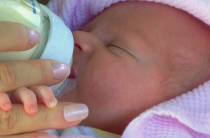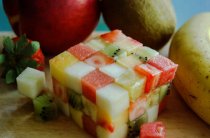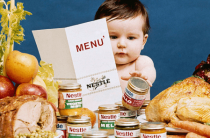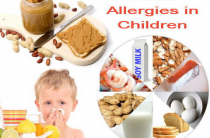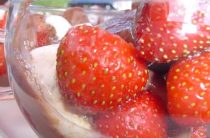A food allergy is an acute reaction from the immune system to safe components that enter our body along with food. The gastrointestinal tract of the baby is very permeable to various potential allergens. The vulnerability of the child's body often causes allergic reactions.
Medical statistics provide very disappointing information: the number of infants who suffer from food allergies is steadily increasing. To date, the role of the influence of certain factors as a trigger for the occurrence of allergic diseases in children has been established. In the modern world, it is important for parents to know what factors stimulate the development of the disease in infants in order to create the right conditions for the healthy growth and development of the child.
Why do babies develop food allergies?
Factors that trigger food allergies in babies include:
- Antibiotics used at an early age
Antibiotics themselves have an adverse effect on the immune system. As for babies, this period is the most “responsible” in terms of the development of the immune system.
- Over-active hygiene
In today's world, hygiene has gone from necessity to paranoia. Fearing germs, people resort to hygiene procedures many times more often than is actually necessary. Meanwhile, the baby's body should not be completely isolated from contact with irritants that are present in the environment. The immunity of a child under conditions of sterility is not able to acquire the skills that he needs to recognize a real threat and adequately respond to it.
- Influence of chemical industry substances
Many substances that are present in various hygiene and cleaning products have an irritating effect on their own. In addition, their foreignness to the body of the baby can provoke allergic disorders, including food allergy diseases.

- Improper nutrition
Modern food products in large quantities contain a variety of chemical compounds used in the food industry to impart density, color, and stabilize taste. Especially a lot of them are used in the so-called "children's" sweets. This is done in order to create a more attractive product for a child who focuses on color and taste characteristics, and not on benefits. It is strictly forbidden to pamper babies with such products.
- Maternal non-compliance with diet during feeding
Breast milk can be a source of allergens for the baby. To prevent this from happening, the mother must strictly adhere to a special diet, which the obstetrician-gynecologist will acquaint her with without fail.
- Using artificial formula instead of breastfeeding
Food allergies in infants when feeding with an artificial mixture are far from uncommon. This is due to many factors. First of all, with the fact that the basis for such mixtures is milk powder. It should be noted that whole milk is one of the most allergenic foods for children. In addition to milk powder, other components can also cause an allergic reaction. Remember that mother's milk is the most optimal and safest for feeding the baby, provided that the mother follows a special diet.
- Allergic heredity
There is a direct relationship between allergies in parents and the occurrence of food allergies in infants. The risk of a child whose parents suffer from allergic disorders to develop allergies is 3-4 times higher. At the same time, it is impossible to predict exactly which allergen the child will be sensitive to and whether it will be food.
Children are the most likely to suffer from food allergies. This is due to the characteristics of the gastrointestinal tract of infants, which does not yet have sufficient enzymatic activity. Enzymes are proteins that the gastrointestinal tract needs to process the complex fats, proteins, and carbohydrates found in food. In addition to enzymes, friendly bacteria of the gastrointestinal tract, the so-called “beneficial microflora”, take part in the process of food processing. In infants, it is also only in a state of development and does not have a population sufficient for the complete processing of food components.
Due to these circumstances, with the introduction of natural feeding, the baby's body can not cope with natural food. At the same time, the mucous membrane covering the stomach and intestines of the baby is able to absorb even large molecules. And now these molecules, which are nothing more than only partially processed food through the capillaries of the gastrointestinal tract, enter the general bloodstream. Large molecules are perceived by the immune system as unfriendly, since their penetration into the general circulation is often associated with viral or parasitic activity. As a result, the baby's body, in order to protect itself from an imaginary threat, begins to secrete antibodies, which cause allergic reactions. Often, the baby successfully outgrows childhood bouts of food allergies, but in some cases, the immune system acquires a persistent sensitivity, which is fixed for life.
Common types of food allergies in infants:
Allergy to cow's milk: whole milk products are rich in specific proteins: casein and whey protein fractions. Most often, the baby's body is sensitive to several types of protein at once. Cow's milk proteins have one specific property - a high degree of resistance to high temperatures, so even boiling milk does not eliminate its allergenic properties.
Chicken Egg Allergy: Protein allergens found in chicken eggs are the most common culprit in infant food allergies. In terms of prevalence, egg intolerance is the most common food intolerance, accounting for half of all cases of food allergy.
Nut Allergy: Different types of nuts in some babies can cause severe allergic manifestations: anaphylactic shock and Quincke's edema, which can be fatal. It is also forbidden to eat oil made on the basis of nuts. If your baby is allergic to nuts, do not eat prepared foods that indicate the possibility of the presence of traces of peanuts.

Allergy to seafood: if the baby is allergic to seafood, then it is advisable to refrain from all contact with them, since even touching fish meat or caviar can cause symptoms of an allergic skin reaction in the child. After cooking seafood, it is necessary to rinse the dishes in which they were well, because even the minimum concentration of seafood proteins can cause food allergies if they enter the gastrointestinal tract.
Gluten Allergy: Gluten is a specific protein found in the structure of cereals (wheat, barley, rye and oats). The higher the concentration of gluten in wheat flour, the better the taste characteristics and texture of products obtained from it. Gluten is the main protein found in baked goods. Food allergy to gluten is very common in infants, due to the peculiarities of the structure of the protein, which is difficult to process in the gastrointestinal tract.
Symptoms of food allergies in babies
Food allergies in children can have a variety of symptoms, which depend on the sensitivity of certain organs and systems to allergens. Symptoms of a food allergy can affect the baby's skin, gastrointestinal tract, respiratory system, general well-being and behavior.
- Gastrointestinal tract injury
One of the first symptoms of a food allergy in infants is a sharp deterioration in appetite, along with which the baby experiences nausea and vomiting. Food allergies impair the digestion of food, due to which the food bolus exerting pressure on the walls of the intestine leads to pain in the lower abdomen, the baby cries and pulls the arms to the tummy. The state of the microflora, in case of exposure to allergens on the gastrointestinal tract, improves.
- Skin lesion
Perhaps this is one of the most obvious manifestations indicating a food allergy in infants. Skin rash during food sensitivity may be different. Basically, it is represented by skin peeling, the appearance of a rash in the form of red spots and blisters or small liquid nodules. A nodular rash may transform into a hard surface that develops from the liquid contents of the rash.
- Manifestations of puffiness
If a food allergy in a child has a severe course, then this can lead to manifestations of puffiness caused by the effect of histamine on vascular tone. Under the influence of this hormone, the capillaries expand intensively, which leads to the accumulation of a large amount of fluid in the skin tissues of the mucous membranes. The face, ears, spaces around the eyes, oropharynx, and extremities are most often affected by edema. If you notice swelling on the body of the baby, be sure to call an ambulance.
- Eyes and respiratory system
These organs in infants suffer from food allergies less frequently than the skin or digestive system, but in some cases, respiratory manifestations of allergies can also occur. They are often mistakenly confused with colds because the symptoms are similar. The baby begins to intensively sneeze, cough, his nasal passages get clogged, his eyes turn red, tears flow from them. An even greater insidiousness of this symptomatology with food allergies is that body temperature can also rise. Therefore, at the slightest respiratory manifestations in infants, immediately contact your pediatrician, since it is sometimes impossible to distinguish a food allergy from a common cold on your own.
How to identify food allergies in infants?
Diagnosis of food allergies in infants should be handled exclusively by specialists. During the diagnosis of this disease, the following points are essential:
- the nature of the symptoms;
- whether the symptoms are allergic in nature;
- what kind of product provokes allergic reactions;
- how quickly allergic reactions develop;
- the impact of food allergies on the overall well-being of the baby;
- dependence of symptoms on the presence of certain foods in the diet;
- how long does the baby suffer from allergies;
Both laboratory methods and special dietary measures are used to diagnose the disease. Based on a detailed survey of parents, a list of suspected allergens is compiled. These products are completely excluded from the baby's nutrition plan. Next, one of the alleged allergens is introduced into the baby's complementary foods in small quantities. During the week, the child's condition is monitored. The resumption of symptoms of a food allergy reaction, in this case, confirms the sensitivity of the baby to this product.
Breast blood test
In some cases, the course of an allergic disease in a baby is so intense that contact with an allergen for diagnostic purposes is dangerous. With such a clinical picture, a special blood test comes to the fore to determine the cause of the allergic reaction. This is a laboratory measurement of the level of antibodies, which is measured on the basis of special laboratory diagnostic manipulations. A blood test for antibodies allows you to trace the cause of true allergic reactions that develop as a result of a specific immune reaction with the release of antibodies. Unfortunately, it is powerless if allergic manifestations are not of an immune nature. In this case, biological substances that contribute to the appearance of allergic reactions are released without the participation of antibodies and their level, accordingly, does not matter for clarifying the nature and source of allergic manifestations.
The right menu for a nursing mother
Allergens can enter the baby's body through breast milk. In this case, the mother mistakenly thinks that her milk is the cause of food allergies in the infant. In fact, errors in the diet are to blame. In addition to the products themselves, which may carry an allergenic potential, the instigators of food allergies in a child can be various synthetic substances used in the production of modern ready-made food or semi-finished products.

In the event that the baby is fed with milk formula instead of mother's milk (this should only happen for certain reasons, with mandatory medical instructions!) Food allergy reactions are possible due to its composition. Often the basis for such mixtures is cow's milk, which is little subject to processing. As a result, a large amount of cow proteins, which are powerful allergens, enter the child's body along with the mixture. In this case, it is necessary to replace the nutrient mixture with one that contains protein derived from soybeans as a basis. There are also mixtures obtained by hydrolysis of cow's milk. In these products, the original proteins have already been broken down into amino acids that cannot serve as an allergen.
The nutrition plan for mothers who are breastfeeding consists of allowed and prohibited foods:
| Forbidden | Allowed |
|
|
Treating food allergies in babies
First of all, in order to treat the baby from the diet, it is necessary to eliminate the product that causes the symptoms of the disease. The cause of food allergies is determined on the basis of special diagnostic methods that are used exclusively by specialists.
During an exacerbation of an allergic reaction, a doctor prescribes special antihistamines for children. There are no special children's antihistamines, because the mechanisms of the development of the disease in infants are the same as in adults. However, the choice of antihistamines is made with great care by the pediatrician, based on medicinal characteristics that allow their use in pediatric practice. To relieve skin manifestations, special hormonal ointments are used that relieve skin rashes, as well as itching and other skin-allergic inflammatory reactions. As with allergy pills, ointments are used with great care. The emphasis in the treatment of food allergies in infants is on measures of diagnosis and avoidance of contact with the allergen.
Food allergies and breastfeeding
Since most cases of childhood food intolerance are associated precisely with the incorrect introduction of natural food into the diet, it is necessary to focus on this point. The correct transfer of infants from mother's milk to natural feeding is one of the best preventive measures against this disease.
Mothers most often make the following mistakes when breastfeeding:
- too early start to give the baby natural food;
- the food offered to the baby objectively does not correspond to the period at which its use is shown;
- the amount of natural food is excessively large;
- the mother transfers the child to dry mixes without objective reasons;
- improper selection of natural food for feeding;
The first natural feeding should be done only after the baby is six months old. In no case should you give your child whole cow's milk, chicken eggs, citrus fruits, gluten-containing cereals and other allergenic foods. The best for feeding are boiled cereals on the water, lean boiled meat, as well as non-allergenic vegetables. It is necessary to give them to the child in minimal quantities with a gradual increase in portions.

